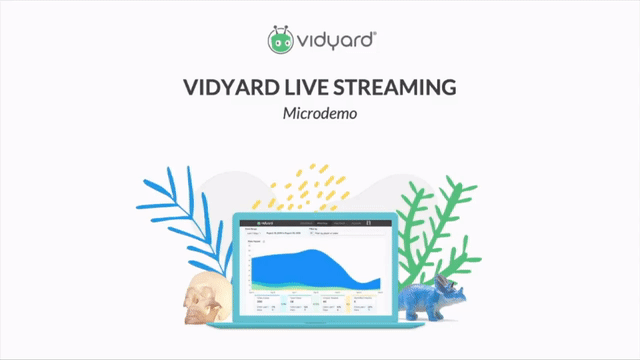I know from experience that scaling Solutions Consultants (SCs) and sales teams as a whole can be a challenge, as I have witnessed how it can take up to 24 months to fully mint a new Solutions Consultant. Demo videos are the solution for growing B2B software companies when scaling their enterprise sales teams and, in particular, their technical sales teams.
Due to the varied role, Solutions Consultants must be able to walk a prospect through a product demo, discuss in-depth challenges and scope solutions to those challenges. With such a long time-to-value, increasing headcount is rarely the answer for high-growth companies without the use of demo videos.
[tale-of-contents]
This is a challenge I was recently facing in my own organization. We needed to scale fast as well as increase our competitive advantage and regain control of the sales cycle. It seemed like an impossible task, but I looked towards utilizing demo videos in the sales cycle for the answer.
I, and many others, believe this will be the future of B2B sales. Forrester recently predicted that B2B sellers will become experts at creating and engaging with video. And, according to Vidyard, the change is already happening. The use of one-to-one video (most often used in sales conversations) exploded with an increase from 7% in 2019 to 40% in 2020, representing a 471% increase year-over-year.
In this article, I will take you through my experiences in introducing demo videos to the technical sales cycle.
 Free Asynchronous Video Tool
Free Asynchronous Video Tool Record and send asynchronous sales videos for free.Sign Up FreeIncreasing Solutions Consultants’ Efficiency Through Demo Videos
Record and send asynchronous sales videos for free.Sign Up FreeIncreasing Solutions Consultants’ Efficiency Through Demo Videos
In order to scale our company fast, the first point of focus was to increase the efficiency of our SCs. This would allow us to cover more opportunities in the market without increasing headcount.
Many organizations will recognize this challenge; you have a brief discovery (or needs analysis) call with a prospect and this leads to a fairly standard demo video, showing off all the best functionality of your product. The demo goes well, but the opportunity ultimately goes cold.
Perhaps the demo wasn’t properly tailored to the prospect’s needs? Perhaps you only had contact with a single stakeholder? Either way, the opportunity has exited the sales cycle and the effort spent on the discovery and demo has been wasted.
What proportion of demos are wasted like this? How many opportunities exit the sales cycle after the demo stage? 30%? 40%? More?
That was when I began exploring the introduction of video into the demo process. I decided that we could send out high-level demo videos of our product before the live demonstration. Of course, these videos had to be tailored based on the discovery call, showing the elements of the solution that will be most valuable to the prospect.
Learn from the Pros
Here is an example of a 3-minute demo video of the functionality of live streaming in Vidyard.

Gathering analytics on who has watched the demo videos, can act as a secondary stage of qualification. If a prospect can’t spare the time to watch a 15-minute video, then maybe you need to change your messaging, pain point angle or video length.
Reducing the Number of ‘Wasted’ Demos with Demo Videos
The impact of this for us was tangible and real. As I’m sure is the case in many organizations, SCs are a finite resource. Account Executives are vying for the best resources they believe are required for their opportunities. This can often pose a challenge where we are looking to ensure the right resources are being assigned to the largest, most strategic deals.
By introducing demo videos into the enterprise sales cycle, we are able to use them as a new stage of qualification. We now only allow SCs to perform live demos after both a remote prospecting discovery call has taken place and all stakeholders have watched the 15-20-minute overview demo video of the solution.
By weeding out these non-opportunities, it allows SCs to take a more valuable role in the organization. Rather than repeating overview demos for opportunities that may not be properly qualified, they can focus more of their time on the larger, or more strategic deals.
Learn From the Pros
The folks at PostBeyond created a great 2-minute product demo video to give their prospects some context before a meeting.
 Delivering More Client Value with Demo Videos
Delivering More Client Value with Demo Videos
As well as weeding out the non-opportunities, we found that sending demo videos of the solution before the live demo can result in other benefits. Stakeholders come to the demo meeting with a base level of education of what it is your product does and how it works. This means you can spend your valuable face-time on the most important areas for your prospect rather than giving a harbour tour of your solution.
It hit home for me what a game-changer the use of demo videos is in the following example.
I had conducted a discovery (needs analysis) call with a prospect and had sent them the relevant demo videos based on their requirements. Before going into the live demo, every single stakeholder had watched that tailored video. When I began the demo, I asked if they would like to see the main part of the solution again. They would have already seen this in the overview demo, but this was the bread and butter of the product which we would expect to cover in almost every demo.
Amazingly, they replied “No thanks”.
Instead, they had a list of questions based on the demo videos. I demoed only the areas that were most important to them in a very agile environment. Not only did this result in a highly tailored demo for the client, but it also created a far more conversational approach, which results in building all-important rapport with stakeholders.
Learn From the Pros
Matt Hall from Woodway UK made an unboxing demo video to show prospects where they’re going wrong with packaging, and how he can help. To double down he also used the Vidyard bubble feature over top of his unboxing video so that he could walk the prospect through the pitch.
 Demo Videos Provide More Time for Differentiation
Demo Videos Provide More Time for Differentiation
Most importantly, because SCs are no longer inclined to perform ‘harbour tour’ or ‘art-of-the-possible’ demos, they have more time to focus on the client’s specific needs as well as on the areas of the product which will help it stand out from the competition.
Ultimately, with stakeholders attending demo meetings having a base level of education of the solution, more time can be spent on covering the prospect’s questions, specific requirements and competitive differentiators.
 Master Video for Sales
Master Video for Sales In just 20 minutes, you can gain the fundamentals to effectively sell using videoSign up FreeStakeholder Mapping Through Demo Video Analytics
In just 20 minutes, you can gain the fundamentals to effectively sell using videoSign up FreeStakeholder Mapping Through Demo Video Analytics
Over the years, I have witnessed first-hand the risks of engaging with a single stakeholder. There is a risk of the opportunity going cold. They might stop replying to emails, they might change roles or even leave the organization. If there isn’t a relationship with other stakeholders, this can jeopardize an opportunity.
A big part of the idea of introducing demo videos to the sales cycle was the ability to regain control of a sales cycle by tracking who had watched each demo video and especially who it had been forwarded to. The expectation was that we would be better equipped to map out stakeholders in the sales cycle and mitigate the risk of a dependency on a single individual.
By gathering analytics on who has viewed demo videos (and for how long), we can build a picture of how engaged each stakeholder is. If they don’t bother to watch the demo video, perhaps the opportunity isn’t as real as it seems. The same is true if they merely skip through demo videos without paying attention. For this reason, we now require all stakeholders to have watched an overview demo video before assigning an SC to an opportunity to reduce the number of wasted demos.
Learn From the Pros
RouteThis used video to showcase their app and gauge the interest level of the person watching based on their viewing behavior.

Conversely, if we can see good engagement in demo videos, we know the opportunity has legs. What’s more, if the demo gets shared around the stakeholder’s peers there is clearly engagement in that organization in the sales process. Account Executives can see who a demo video has been forwarded to which helps build a stakeholder map of that opportunity. More often than not, these are stakeholders who wouldn’t have been discovered through a sales cycle that didn’t utilize video.
Although this was an expected outcome of the project, what I didn’t anticipate was the scale of this would impact the sales cycle. We have discovered (on average) more than two new stakeholders on each opportunity. That has taken a huge amount of risk out of the pipeline where opportunities were previously dependent on a single stakeholder.
Demo Videos Add Value
By utilizing video in the sales cycle, we have increased the efficiency of SCs by reducing the number of ‘wasted’ demos. This means we are able to cover a greater number of opportunities without increasing headcount. We now have a far better understanding of the level of engagement of opportunities as we can see who has watched each video. This feeds into our stakeholder map for each account and helps reduce the risk of opportunities with a single stakeholder.
But most importantly, we can now add more value to clients and prospects. SCs tend to be highly skilled individuals who have an enormous in-depth understanding of the challenges solved by software. Instead of wasting their time with ‘art-of-the-possible’ demos, they can have deeper discovery conversations and help challenge their prospects’ way of thinking. This will surely lead to happier customers in the long run.
The post Demo Videos: How to Utilize Them in Your Technical Sales Cycle appeared first on Vidyard.
Read more: vidyard.com









